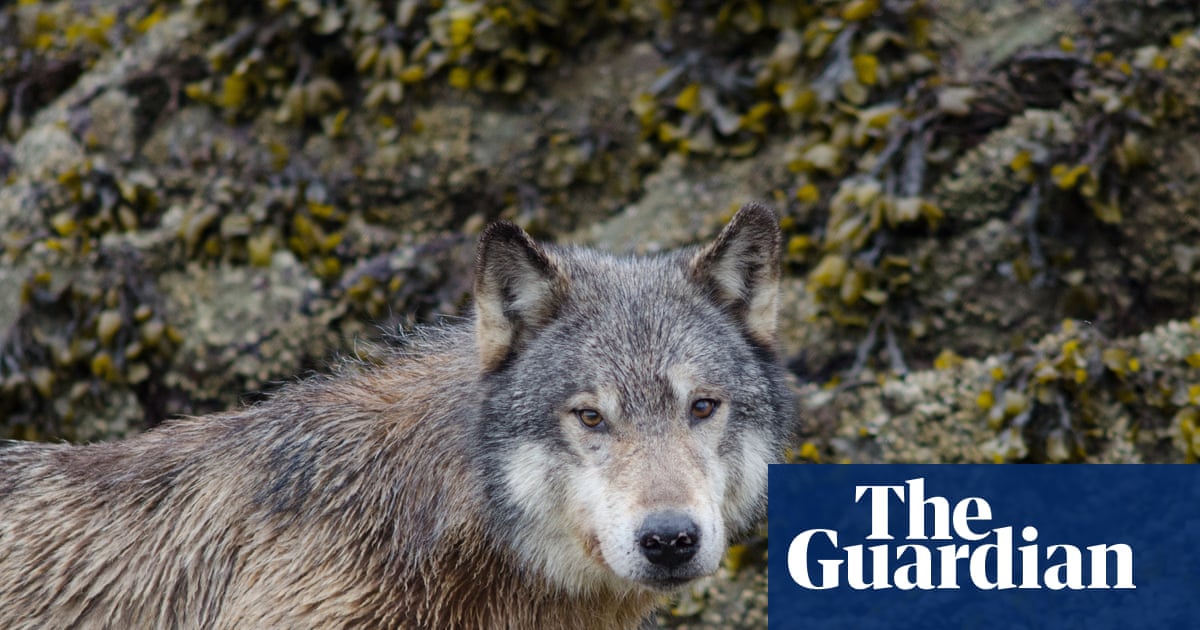The clues read like something from mystery novel: crab traps, suspiciously hauled ashore by unseen hands, had been damaged by baffling teeth marks. The bait inside was missing.
The question for researchers in the remote corner of British Columbia was: whodunnit? As with many crimes of opportunity in the modern era, the culprit was unmasked by a remote camera.
Researchers have revealed that wily sea wolves had retrieved the traps, swimming to the depths to haul in the float, dragging the ropes ashore in a series of quick and deliberate tugs that underscored what ecologist Kyle Artelle described as “highly efficient and focused behaviour”.
The startling discovery – and potential use of tools – broadens our understanding of wolf intelligence and gives a glimpse at the delightful surprises that emerge when predators coexist with humans.
Artelle’s findings, published in the scientific journal Ecology and Evolution alongside co-author Paul Paquet, come as the result of close collaboration with the Heiltusk First Nation in British Columbia.
A sea wolf drags a trap to shoreA sea wolf drags a trap to shore
For more than a decade, the community of Bella Bella has battled European green crabs. Introduced to California more than three decades ago, the invasive and ruthless crustacean has been moving northward, devastating clam beds and eelgrass ecosystems, which are a key source of shelter for young fish. In the case of the Heiltusk, the legacy of a toxic diesel spill in the region has bolstered the ability for the opportunistic green crabs to thrive.
As part of a monitoring programme to blunt the spread of the crustacean, Haíɫzaqv Guardians place specifically designed traps in the shallow intertidal zones. They also drop traps in deeper water, marking the location with brightly coloured floats.
Beginning in 2023, however, the team noticed that a number of damaged traps with teeth marks.
“We figured wolves or bears were getting to these traps because the traps were fairly accessible during low tide,” said Artelle. “But we just couldn’t figure out what was attacking the deeper traps.”
Initially, otters or seals were thought the likeliest culprits. But when researchers positioned cameras near the traps, they made an astonishing discovery.
Footage shows a wolf swimming ashore with a float clenched between her teeth. She drags it on to the beach in order to get a better angle on the rope, and pulls on the line until the crab trap emerges from the depth. Soon after, she accesses the bait cup, absconding with a snack – but leaving an answer to the year-long mystery.
“We couldn’t believe our eyes. It was serendipity that we actually captured this behaviour. And it was, quite simply, inspiring,” said Artelle, adding that both scientists and the Heiltsuk have long known wolves are fiercely intelligent predators. “You can see the efficiency with which she moves through the traps. This isn’t genetic. This is an entirely learned behaviour, and learned very fast, and likely shared among the group.”
The thief was a rare species of canine known as the coastal or sea wolf. These apex predators thrive in marine environments and have become adept at living off a diet of salmon, shellfish and seals.
In most of the province, wolves are a nuisance predator – and hunted accordingly. But the Bella Bella community, through the Haíɫzaqv Wolf and Biodiversity Project, has a different relationship to wolves. They are not hunted. Instead, they live alongside humans.
“There’s a pack living at the edge of town. They’ve lived with people for millennia, but they’ve forged a strikingly different relationship,” said Artelle, adding the rugged, thickly forested land and sea scape “is possibly one of the few places in the world where wolves can fully be wolves”.
The implications from the video, he says, are profound.
“This is a whole new dimension of their behaviour that we did not realise. When we see these new dimensions of human potential, it gives us a further appreciation of our own species and what it can mean to be human,” said Artelle. “This just gives us a new dimension of what it can mean to be a wolf and raises a larger question: what else can they do?”

